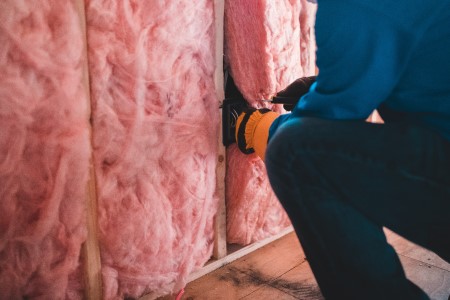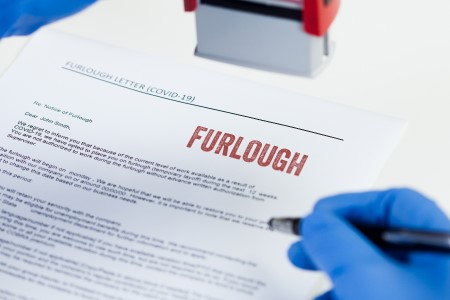
Buy-to-let property remains a key asset class for UK investors. Demand shows few signs of slowing down, even with the current problems facing the economy. The Government’s latest English Private Landlord Survey showed 11% of those surveyed plan to increase their portfolios. Small- to medium-sized enterprise (SME) landlords plan to do the same, according to Handelsbanken. A recent study from the bank found that 49% of professional landlords – those owning at least four properties – intend to expand.
As it stands, there are around 2.65 million landlords in the UK, while 275,600 buy-to-let mortgages were approved in the year to February 2022. This was the highest number of approvals recorded since 2016.
Searches within the buy-to-let sector also spiked over the summer months. “First-time landlord” dominated searches in April, according to Knowledge Bank. However, should buyers still want to enter the market now, they’ll have to contend with seasoned pros.
To assess if these investment plans are the way forward, we’ll explore the benefits of buy-to-let and if buy-to-let is worth looking at in the current market.
Source: Property reporter, Bridging & Commercial, Rightmove, Estate Agent Today, Mortgage Strategy, Property Reporter, Auction House London
What are the benefits of buy-to-let?
Like any investment, property returns can’t be guaranteed. However, where investors do their research and tick all the right boxes, buy-to-let property can present a lot of benefits.
Benefit 1: A source of income – landlords can benefit from rising rents
So long as you can secure reliable tenants, a buy-to-let property can provide a consistent stream of income. An income source which has reached unprecedented levels. Rents have risen by 12% over the past year across the UK. This has taken the average rent to £1,051 a month, according to Zoopla.
As to be expected, London saw the biggest hikes of 17.8%, with rents sitting around the £2,000 mark. But no matter where investors turn, they’re likely to find potential. Manchester, Glasgow, and Bristol all saw massive spikes.
There’s still room to grow too. Rents could be pushed even higher in 2023 due to fierce supply squeezes. Overall, buy-to-let investors in England and Wales are yielding around 6.1% for the current year. In the North of England, yields are reaching almost 8%. By comparison, the FTSE 100’s total dividend pay-out for 2022 is expected to generate a yield of 4.2%.
The income of rents alone is one of the benefits of buy-to-let that make it worth the investment.
Source: Mortgage Strategy, Property Industry Eye, AJ Bell, ITV, Property Industry Eye

Benefit 2: Capital growth – property prices show few signs of slowing down
Even if yields were to fall to zero, rising property prices could shield investors. The average asking price for property coming to market hit £367,760 in September, according to Rightmove. A monthly rise of 0.7%. Despite all the dire economic news, average property prices have grown consistently since the pandemic emerged.
Source: Rightmove, Land Registry
Benefiit 3: Rising demand for rental properties
As house prices rise, younger generations are increasingly unlikely to get onto the property ladder, adding to rental demand. Indeed, the supply of quality rental properties is being squeezed in major cities. In London alone, Chestertons saw tenant demand rise by 171% in the first six months of 2022. Meanwhile, the number of homes to rent in London dropped by 38% in the year to July 2022.
The UK, in some respects, also appears to be slowly shifting towards renting culture. Over the last decade, the number of rental properties grew to 10.5 million, a rise of 12.2%. Rental properties now account for around 35.7% of all UK dwellings.
According to Ocasa, the UK now sits alongside other nations famous for their rent-based housing markets. This includes Germany, Hong Kong, and Switzerland.
While it’s true, many people will have to embrace renting as they’re priced out of buying. But, generational preferences may also have an impact. Younger generations are often happy to embrace the freedom renting brings. Old-school notions of owning a home for decades can seem stifling for adventurous 20-somethings; another benefit of buy-to-let and why it’s worth it.
Source: Chestertons, Property118, Property Notify

Is buy-to-let worth it in the current climate?
The last few years have been difficult to manage for everybody. Many investors have likely asked themselves: “is buy-to-let worth it”? Given the taxes and fees involved, landlords may be wondering if the benefits of buy-to-let outweigh the costs.
Since 2016, investors have had to contend with a Stamp Duty surcharge of 3%. Additionally, mortgage and loan interest relief on second homes was phased out last year. More costs and admin may be on the horizon too as the Government plans tougher regulation for the rental market.
Landlords also need to factor in the recent changes introduced by Kwasi Kwarteng. The new Chancellor’s “mini-budget” will likely present a mixed bag for BTL investors. Stamp duty cuts may boost property prices, helping existing landlords, but making it harder for new entrants.
The corporation tax freeze may help landlords investing through limited companies, while the National Insurance reversal will cut tax costs – as will sped up income tax plans. But, the wider financial markets appear unconvinced. The value of the pound plummeted following the announcements, while the Bank of England was forced to step in and try to stabilize the bond market.
Despite the uncertainty, the costs and downsides still need to be factored into a wider equation. Investors can offset some of their expenses against the amounts they pay tax on. For residential properties, this includes fees paid to letting agents, council tax, advertising costs and money paid towards repairs.
There’s also the ongoing cost of living crisis to contend with. Supply chain issues, energy bills, food prices – everything seems to be going wrong at the moment. The economy is unstable to say the least. But property, as an asset class, may be able to weather the storm better than most.
Where investors worry over day-to-day bad news, they should take a step back and focus on the long-term. Buy-to-let property has delivered better returns than shares, bonds and Government gilts over the last decade, according to analysis from Sequire Property Investment.
This means buy-to-let investments held up in the face of the painful 2008 crash recovery, Brexit uncertainty and – of course – the pandemic. We should try to remember the benefits of buy-to-let and the fact that no matter how bad things get, people will always need a place to live.
Source: Property Investor Post, Simply Business, Bloomberg, Reuters
For more information, feel free to check out our buy-to-let mortgage calculator or our report on how the buy-to-let sector coped with Covid-19.
Disclaimer
MFS are a bridging loan and buy-to-let mortgage provider, not financial advisors. Therefore, Investors are encouraged to seek professional advice.










